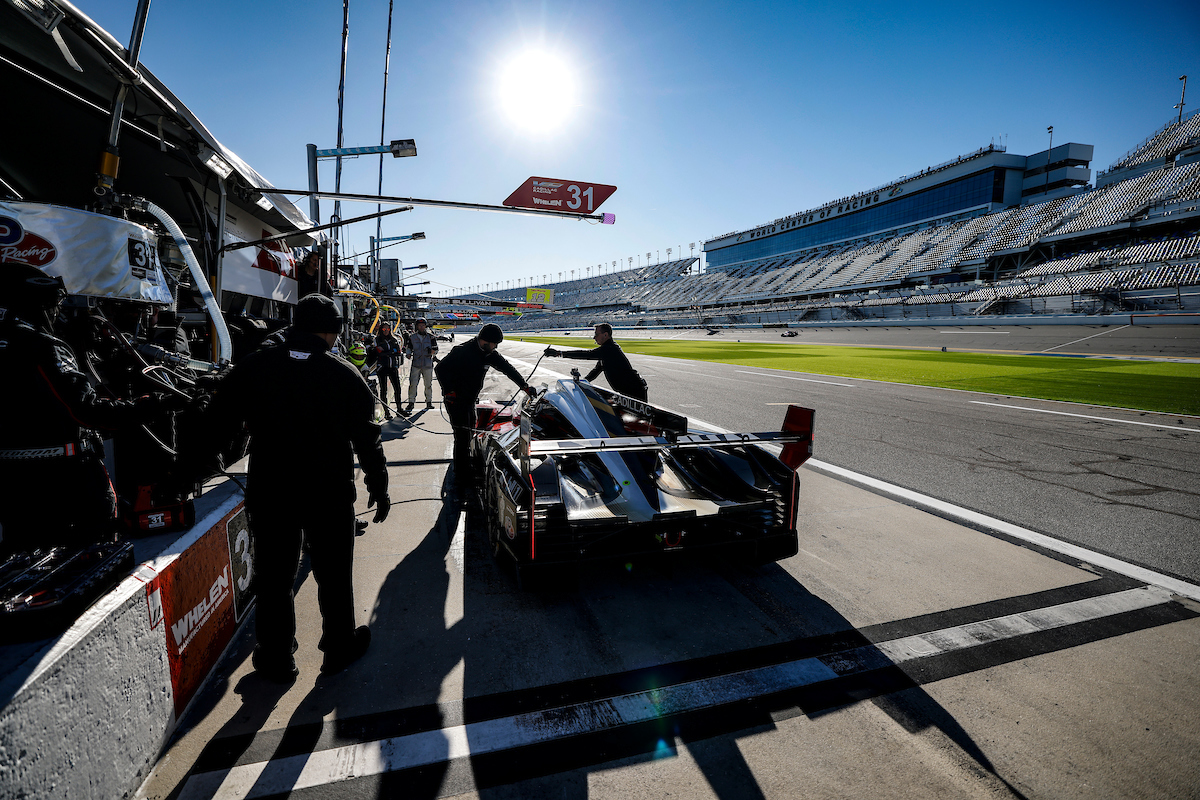For the IMSA WeatherTech SportsCar Championship teams and drivers, practice for the Rolex 24 At Daytona is over and now the work goes over to preparing for 24 hours of racing? Chris Mitchum, Whelen Engineering Cadillac Racing’s Director of Race Team Operations, describes the process the pole-sitting No. 31 V-Series.R of Pipo Derani, Jack Aitken and Tom Blomqvist will go through over the next few hours.
“Friday is an interesting juggling act, and always is, at Daytona,” Mitchum says. “Friday will have a few marketing and media requirements that you have to do. You just have to figure out how to meter that timeframe, you have to figure out, ‘OK, how much how much can I devote to this and not distract myself?’ Really, what we try to do for the drivers in the crew is mitigate as much as we can on how much interaction they have to have. We do have a few of our own team meetings that we go through. Our goal for Friday is to have the guys out of here by about 3pm, so they get a nice, relaxing afternoon — in a perfect world.”
[lawrence-auto-related count=3 category=1406]
The final practice for most teams is filled with putting in some hard laps to make sure the car is good, verifying systems, getting some final pit stop practices under the crew’s belt. Many teams haven’t even used the whole hour, and in some cases skip the session entirely.
“When the car comes off the track, we do our standard work list and go through the car, another visual of everything on the car at that point. Your confidence level is either really high, or you’re going to have a whole emergency moment — and you never know which one it is,” Mitchum relates. “But after that last session, we then put a race game face on, get the car prepped and try to try to get our guys off the off their feet, because we’re not going to have much choice but to be in the track at 8:00 the next morning.”

After Thursday night practice, “the engineers will make their final decisions on setup. We’ll plug that information into the car before we go home on Friday. Of course the car is completely ready to run, and obviously it sleeps inside the trailer make sure it’s as safe as it can be. Then, really, it’s a lot of hurry-up-and-wait on Saturday morning.”
If that doesn’t sound like a lot of work prior to a 24-hour race, it’s because the hard work has been done between qualifying during the Roar Before the 24 weekend and the beginning of practice on Thursday — and, in reality, at the shop before the car ever heads to the track.
“As long as everything goes according to plan, most of your preparations are pretty well together by the time you get to the Roar,” says Mitchum. “Monday we come in, tear the car down back to the tub and put all new corners, new back half, new engine. All the bodywork gets assembled, the car gets sent and scanned by a Creaforrm machine [3D scanner] before we go through tech to try to get ahead of things. And if all that goes well, which it did so far for us this time, Tuesday was pretty light. For us. It was a setup and checklist day, we got to get out pretty early.”
None of the parts that came off the car had reached the end of their service life, and in fact most will be kept as primary spares. “A good, known, run part is usually what you want to have on the offering here,” Mitchum says. The parts are replaced between the Roar and race weekend merely as a precaution.
If all has gone according to plan, right now the crew of the No. 31 is getting ready to head out and get a good night’s sleep. The next day is going to be a long one.
